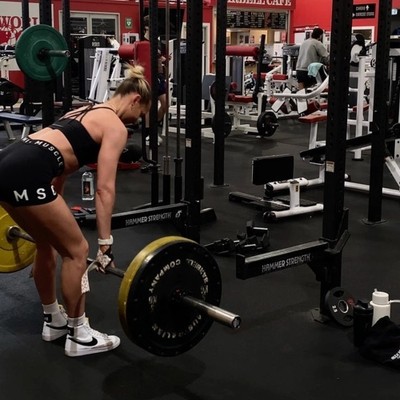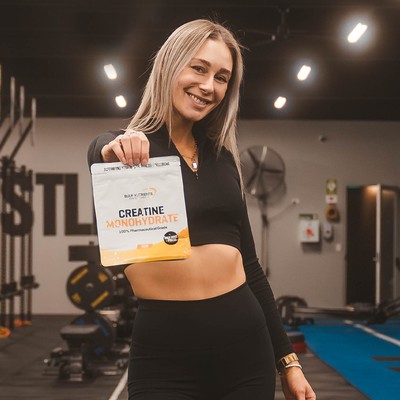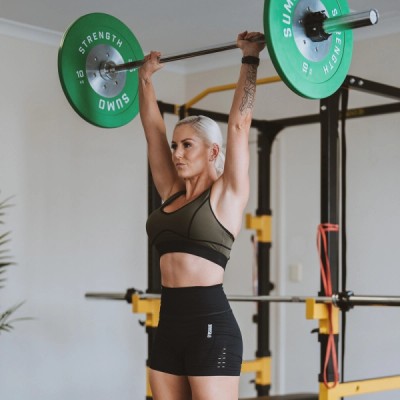How Much Muscle Can Women Gain Naturally?
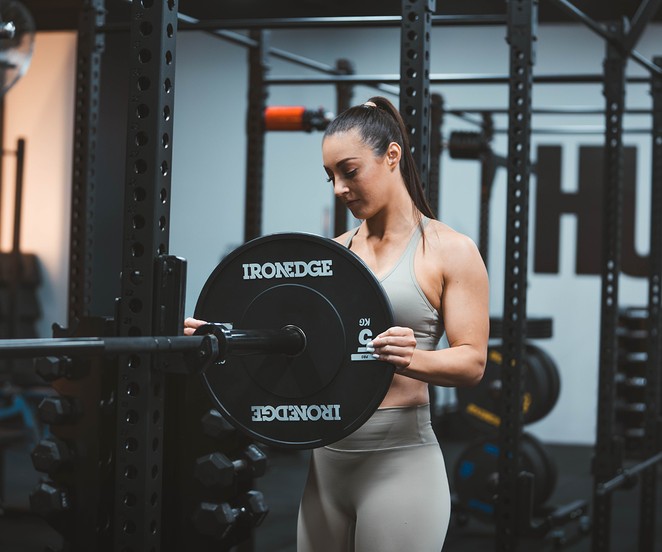
Women and muscle growth
For starters, women can't get as big as some people think. You might have seen images like this around the internet before; some people can't see them enough!
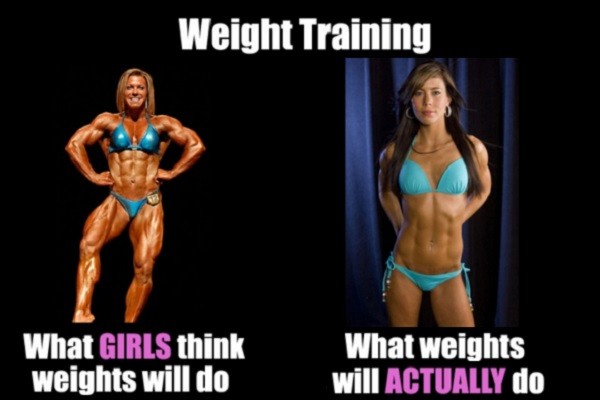
Of course, anabolic steroids change the game totally, which we don't recommend. But that is how women can get "abnormally" large.
The same can be said of men; they can train for 10-20 years but still not get significantly larger. This is because of the muscle growth "ceiling effect".
Sadly, regardless of our gender, we can't just keep growing noticeable levels of muscle mass week in and week out.
So, what are the facts around female muscle growth? Can they grow as much muscle mass as men?
You bet.
Research shows women can grow the same amount, and can actually gain more strength than men!
Research also shows when muscle mass is the same between both sexes, women actually have a higher rate of muscle protein synthesis!
Also, in a study of 813 volunteer elite athletes across 15 sporting categories, females boasted 85% as much muscle as their male counterparts.

The difference in muscle mass between the genders comes down to multiple factors, including that women need roughly 12 percent body fat to keep their hormones in check compared to men's 3 percent .
The other factor that can inhibit female muscle growth is the use of contraceptives.
Research shows that birth control pills can decrease androgen levels, whereby growth factor levels are lost and cortisol increases.
In the study, two groups of young healthy women (18-29 years old) performed 10 weeks of whole-body resistance training. They did it for three days per week, 3 sets, with 6-10 repetitions at 75% of their one-rep max, totalling 13 exercises.
The researchers found:
"Oral contraceptive use impaired lean mass gains in young women after RET and was associated with lower DHEA, DHEAS, and IGF-1 and higher cortisol."
The researchers concluded that "the diminished lean mass gain may be related to the effect of oral contraceptives on anabolic and catabolic hormone levels ..."
And on the topic of muscle-building hormones, let's take a look at testosterone levels in women, and why they can grow muscle without it!
Testosterone for muscle growth and the differences between men and women
It's a fair question to ponder: why can men and women grow the same amount of muscle if men have more testosterone?
Well, this is because testosterone isn't the only thing that governs muscle growth, and in fact, it isn't needed for muscle growth in women.
Women can grow muscle mass utilising the power of hormones like IGF-1 and growth hormone, which more or less stand in for testosterone.
In fact, research shows that in women, IGF-1 performs a "gender-specific" influence on muscle strength. Moreover, women have just as much IGF-1 as men, but three times more growth hormone!
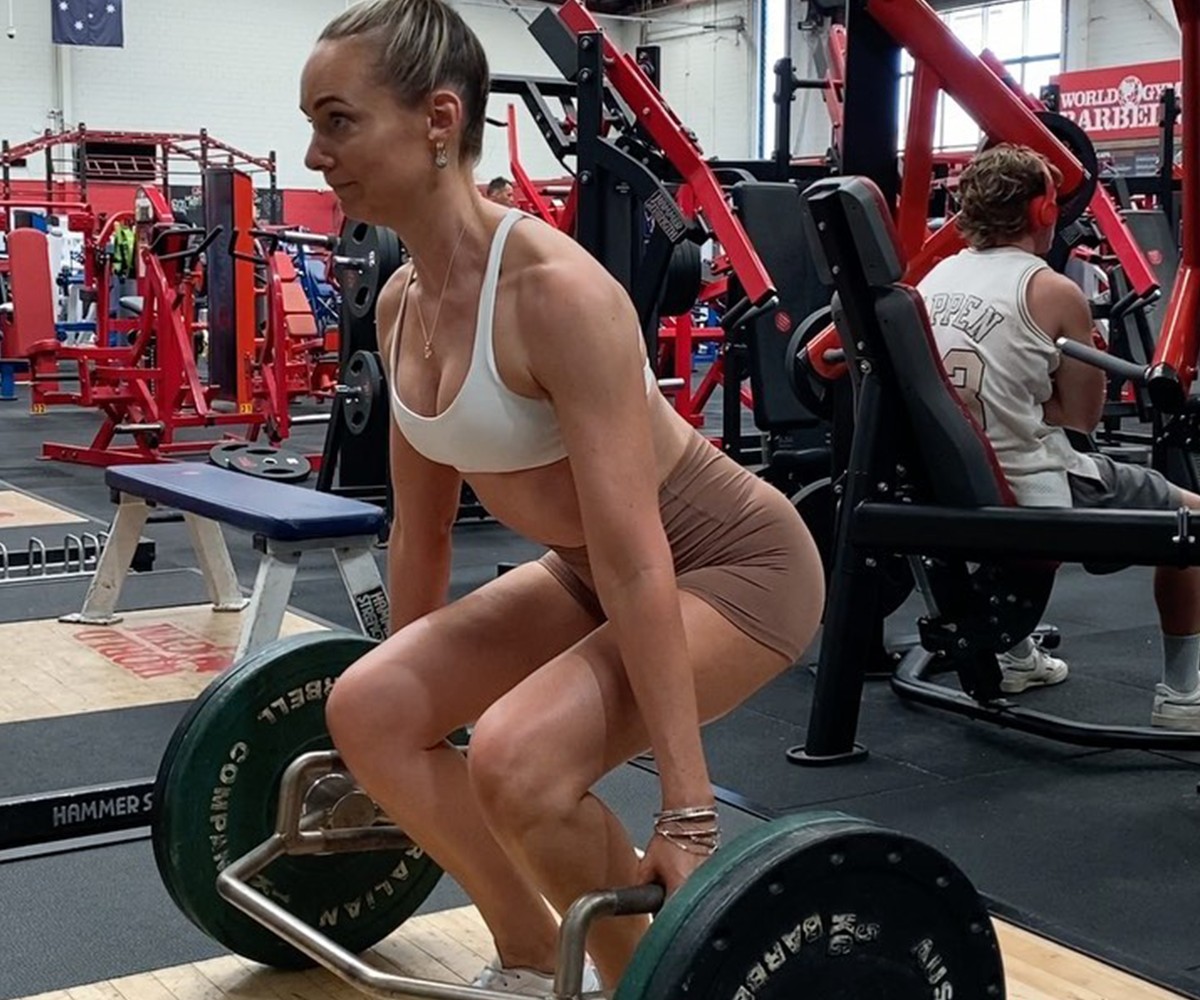
It seems women swap out testosterone with the other anabolic hormones and can then gain the same amount of muscle mass as men.
And contrary to popular belief, estrogen plays a key role too.
Estrogen for muscle growth in women
Ask anyone about estrogen, and they'll tell you it's an evil hormone for both sexes that is not conducive to muscle growth whatsoever.
But for women, this couldn't be further from the truth!
Estrogen actually helps muscle recovery, is anti-catabolic (prevents loss of gains!), and can protect tendons, bones and joints from injury.

The bottom line is that women can grow muscle at the same rate as men, may be able to gain more strength, and actually have a higher rate of muscle protein synthesis.
Women have 85% of the muscle mass as men and rely on IGF-1 and growth hormone as opposed to testosterone, to grow muscle. They also rely on estrogen: it actually helps muscle recovery, is anti-catabolic, and can protect tendons, bones and joints from injury.
Women looking to grow maximal muscle should avoid contraceptive pills, as they decrease androgen levels, growth factor levels, and boost cortisol, which translates into less muscle growth.

Dayne Hudson
Like many, Dayne was once desperate to lose weight and get into shape. But everyone he asked, everything he read, lead to the same place... nowhere.
His journey started there - researching science journals and completing a Sports Nutrition Specialist qualification so he could make weight loss easier.
References:
- Fink J, Schoenfeld BJ, Nakazato K. The role of hormones in muscle hypertrophy. Phys Sportsmed. 2018 Feb;46(1):129-134. doi: 10.1080/00913847.2018.1406778. Epub 2017 Nov 25. PMID: 29172848.
- Hansen, Mette1; Kjaer, Michael2 Influence of Sex and Estrogen on Musculotendinous Protein Turnover at Rest and After Exercise, Exercise and Sport Sciences Reviews: October 2014 - Volume 42 - Issue 4 - p 183-192 doi: 10.1249/JES.0000000000000026
- Healy ML, Gibney J, Pentecost C, Wheeler MJ, Sonksen PH. Endocrine profiles in 693 elite athletes in the postcompetition setting. Clin Endocrinol (Oxf). 2014 Aug;81(2):294-305. doi: 10.1111/cen.12445. Epub 2014 Apr 2. PMID: 24593684.
- Henderson GC, Dhatariya K, Ford GC, Klaus KA, Basu R, Rizza RA, Jensen MD, Khosla S, O'Brien P, Nair KS. Higher muscle protein synthesis in women than men across the lifespan, and failure of androgen administration to amend age-related decrements. FASEB J. 2009 Feb;23(2):631-41. doi: 10.1096/fj.08-117200. Epub 2008 Sep 30. PMID: 18827019; PMCID: PMC2630787.
- O'Hagan FT, Sale DG, MacDougall JD, Garner SH. Response to resistance training in young women and men. Int J Sports Med. 1995 Jul;16(5):314-21. doi: 10.1055/s-2007-973012. PMID: 7558529.
- Pat Vehrs & Ron Hager (2006) Assessment and Interpretation of Body Composition in Physical Education, Journal of Physical Education, Recreation & Dance, 77:7, 46-51, DOI: 10.1080/07303084.2006.10597907
- Riechman SE, Lee CW. Oral Contraceptive Use Impairs Muscle Gains in Young Women. J Strength Cond Res. 2021 May 14. doi: 10.1519/JSC.0000000000004059. Epub ahead of print. PMID: 33993156.
- Rosario PW. Normal values of serum IGF-1 in adults: results from a Brazilian population. Arq Bras Endocrinol Metabol. 2010;54(5):477-81. doi: 10.1590/s0004-27302010000500008. PMID: 20694409.
- Roth SM, Ivey FM, Martel GF, Lemmer JT, Hurlbut DE, Siegel EL, Metter EJ, Fleg JL, Fozard JL, Kostek MC, Wernick DM, Hurley BF. Muscle size responses to strength training in young and older men and women. J Am Geriatr Soc. 2001 Nov;49(11):1428-33. doi: 10.1046/j.1532-5415.2001.4911233.x. PMID: 11890579.
- Schoenfeld BJ, Contreras B, Krieger J, et al. Resistance Training Volume Enhances Muscle Hypertrophy but Not Strength in Trained Men. Med Sci Sports Exerc. 2019;51(1):94-103. doi:10.1249/MSS.0000000000001764
- Taekema DG, Ling CH, Blauw GJ, Meskers CG, Westendorp RG, de Craen AJ, Maier AB. Circulating levels of IGF1 are associated with muscle strength in middle-aged- and oldest-old women. Eur J Endocrinol. 2011 Feb;164(2):189-96. doi: 10.1530/EJE-10-0703. Epub 2010 Dec 6. PMID: 21135066.
- van Anders SM, Steiger J, Goldey KL. Effects of gendered behavior on testosterone in women and men. Proc Natl Acad Sci U S A. 2015;112(45):13805-13810. doi:10.1073/pnas.1509591112
- Velders, M., Diel, P. How Sex Hormones Promote Skeletal Muscle Regeneration. Sports Med 43, 1089–1100 (2013). https://doi.org/10.1007/s40279-013-0081-6
